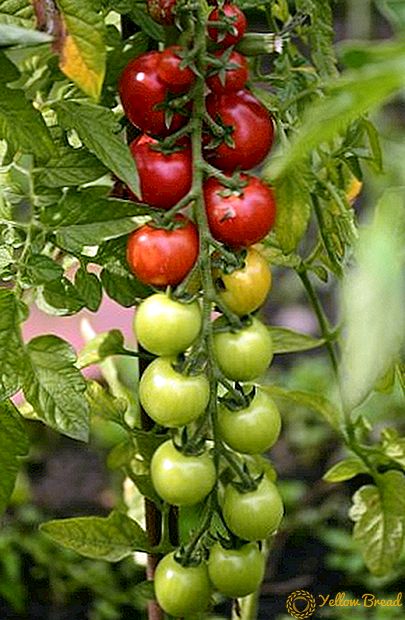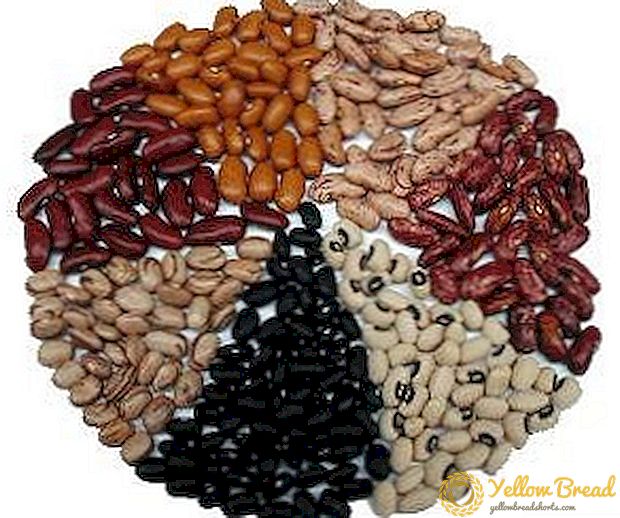
Eggplants are hard not to love, but growing them yourself can be very difficult.
Especially, if the climatic conditions do not allow it.
But he is a man in order to argue with nature itself and come up with hybrid varieties of eggplants, even for growing in the Moscow region.
At the same time, there are a large number of such varieties today, and each of them can boast of its special properties, yield or other qualities, making the choice of one of them very difficult.
The following description of the most popular hybrids, we will help you to decide on this difficult issue, as well as teach them to grow at home.
Eggplants for the Moscow region: what are the features and requirements for the characteristics?
This culture is one of the most thermophilic. For this reason, it is believed that it is not possible to grow it in the Moscow region, since the growing season of the plant lasts about 110 days.
But despite this, the eggplants were able to adapt even to the conditions of severe Siberia, and its inhabitants are pleased with very good fruits.
And although it is possible to grow this plant in such regions exclusively in a seedling way, it is not so difficult to do as it may seem at first glance.
As for the Moscow hybrid varieties, they are divided into two groups: early and middle ripening.
Later for the region it is better not to use them, because they, which are not fully ripe, can be damaged by the first autumn frosts.
Early ripening varieties of eggplants for the Moscow region: get acquainted with the best of the best
Eggplant "Giselle F1": excellent taste and wide zoning

Pay attention to this hybrid form of eggplant is only due to high yields.
In particular, when growing plants in open ground, an area with a surface of 1m2 can easily collect from 7 to 9 kilograms of well-ripened fruits. And when growing plants in the greenhouse the same area can please the number of fruits in 14-16 kilograms. At the same time, the properties of the hybrid form allow it to be grown both in the climate of Moldova and Ukraine, and in the Russian suburban region.
Sowing of seeds is recommended to be carried out in this region already in the middle of March, which will allow transplanting seedlings from May 25 to June 10.
Fruits, like most varieties of eggplant, differ in dark purple, almost black color of the skin.On average, the length of one fruit can reach 25 centimeters, with a diameter of 7.
Externally different cylindrical shape. These eggplants love for their white flesh with very good taste, and for a lot of weight, which on average can vary from 300 to 500 grams.
Regarding the purpose of the fruits themselves, this hybrid form has no limitations: it is well suited for preparing any kind of dishes and for canning.
The most important merits Eggplant "Giselle F1":
- Early high-yielding eggplant, suitable for wide zoning, maturing in 107-117 days.
- High commodity and taste quality of fruits, and also long periods of their storage fresh.
- The possibility of growing a hybrid in a greenhouse way, and in open ground.
- The compact size of the plant itself: up to 120 centimeters in total, practically without thorns on the cups.
Like other varieties of this crop, Giselle F1 has many difficulties in cultivation, since it requires the observance of absolutely all the necessary aspects of agricultural technology. Also, to obtain high yields, it is very important feed plants regularly and loosen the groundin which they are planted.
Light green "Alenka" - an unusual eggplant of great taste

Planting these eggplants is certainly worth it, and not only because this variety is very different from all the others in its skin color. After all, fruits from also quite well.
When using the 60 scheme for 30 centimeters (that is, up to 4 plants per 1 m2), the yield of fruits from 1 m2 can even reach 7.5 kilograms. Pretty simple conditions in the Moscow region do not reduce the overall yield of this variety.
Sowing seeds is recommended in February March, which will allow to get a very fast harvest.
First of all, you should pay attention to the light green color of the skin of these eggplants. Probably for the same reason, their flesh is slightly greenish, and not habitually white like most varieties. The length of one fruit on average is about 15 centimeters, with a weight of 325 grams.
Excellent for cooking and canning, can be combined with other varieties.
A little about benefits described variety:
- Quite early terms of ripening (the growing season lasts no more than 108 days), which allows you to grow a variety even a little north of the Moscow region.
- Unusual attractive appearance and good taste of the fruit.
- Lack of thorns on the cups.
This variety should rather be perceived as a greenhouse culture, since in the open field the quality and size of the fruit can be significantly underestimated. After all, all the same, no matter how widely zoned eggplants are, they remain heat-loving southern plants.
Hybrid high-yielding grade "Agat F1"

Eggplant bush of this variety has a medium size. For this reason, and its overall yield figures are somewhat weaker than those of the varieties described above, and are 6.8 kilograms per square meter. At the same time, the density of plantations per 1m2 should not exceed 6 plants.
This eggplant is fully suitable for growing in the suburbs, but for the full ripening of fruits it is necessary Sow seeds no later than May (You can sow directly in open ground, covering the beds at night with a film).
The color of the skin of eggplant "Agat F1" habitually purple rich taste.
Their form is usually cylindrical, and the average weight is 250 grams. But it distinguishes these fruits from a number of other features of the pulp: having a usual white color, it does not taste bitter at all.Therefore, cooking eggplant without a problem can be started without even scalding them, especially since they can not only be used for ordinary dishes, but also for preservation.
What is the value of eggplant varieties described?
- Good taste and excellent commercial quality of the crop.
- A wide zoning and early ripening periods (the technical maturity of the fruits occurs 100-110 days after the first shoots appear).
- The possibility of growing this hybrid in greenhouses and in the open field.
- Spikes on the cups are found in very rare cases.
Although this hybrid form of eggplant has a number of advantages, it is still quite difficult to grow it. High yields can be obtained only with regular care for the plants, their watering and fertilizing. The greatest danger is the autumn frosts.
Mid-season eggplants and their varieties: what to choose for the Moscow region?
Hybrid form of medium ripening time "Bagheera F1": get acquainted with eggplants

Hybrid forms of plants are created in order to increase yield and achieve sustainability. In the case of this form, all these goals were fully achieved.
In particular, the yield of one bush, which, by the way, can reach a height of 1.2 meters, is from 2.5 to 3 kilograms. Taking into account the fact that about 2.5-3.5 plants can be accommodated per 1m2, it can be called "Bagira F1" high-yielding.
However, such yields are possible only with greenhouse cultivation, under which conditions the sowing of seeds occurs in the middle of March.
In fruits of this form, fruits have very high commodity qualities, which, in particular, contributes to the unusually rich dark purple color of the skin.
The length of one fruit can vary from 12 to 20 centimeters. At the same time, the diameter of eggplants, oval in shape, is on average 5-8 snimeters. They can weigh from 250 to 350 grams each. The flesh is very good in taste, has a greenish color. Its advantage is the absence of bitterness.
Positive features Eggplants "Bagira F1":
- Very high yields and marketability of fruits.
- Suitability for growing low-volume technologies.
- There are no thorns on the plant and its cups.
- Good ripening. With good care and without the use of a sapling of seedlings, complete aging is possible even in 110 days.
The only thing, however, for many very significant, the disadvantage of the described form of eggplants is that they can be grown only in greenhouses. Not having a greenhouse on their plot, many simply refuse to grade, despite its excellent qualities.
Variety "Albatross" - the ideal mid-season for the suburbs

Variety "Albatross" is quite famous, and this fame brought him his high yield. In particular, even when grown on 1 m2 of plants, it is quite possible to collect 8 kilograms of good commercial fruits from this area.
At the same time, the height of a single plant can even reach 70 centimeters with difficulty. This variety grows well in almost any conditions, it is possible to grow both in open ground and in greenhouses. In order to get a full harvest, you need to sow the seeds in the middle of March.
There are no special differences between the fruits of this variety, but if you collect them as a whole, you can easily distinguish them from other varieties. With dark purple skin color, they have a pear-shaped shape. For this reason, determining the diameter of the fetus is quite difficult.
But its length can vary from 15 to 22 centimeters.Like the previous variety, the flesh of the Albatross has a greenish tint, and also has absolutely no bitterness.
Pros varietieswhich its inconspicuous name hides:
- The flesh has excellent taste, from which also does not lag behind and appearance.
- High resistance to the most common diseases of eggplants - cucumber and tobacco mosaic.
- Suitable for use in all types of cooking and canning.
- Absence of thorns on the plant.
- Fruits always ripen on time and evenly (the full growing season from germination to technical maturity lasts 135 days).
Despite the resistance to viruses of the two mosaics mentioned above, this variety behaves quite tolerantly with all other diseases characteristic of this culture. In this regard, eggplant stands of the variety “Albatross” will have to be constantly processed for prophylaxis and to monitor their condition.
Requires a plant and regular dressings, as well as care for the soil.
How eggplants are planted and what are the features of this process: detailed explanations

Planting eggplant can be carried out both seedling and seedling ways.The advantage of course more belongs to the first, especially in the conditions of growing this crop in the Moscow region.
Sowing of seeds is usually carried out in mid-March, because more than 45 days should pass before the time of planting seedlings in open ground. This is due to the fact that eggplant - thermophilic plant, and planting them in open ground unstable conditions in the Moscow region in too young form can lead to fatal consequences.
Sowing both seeds and planting should take into account the necessary space between the rows. In particular, ideally between plants to leave from 30 to 35 centimeters, and between rows - from 60 to 65.
In general, over an area of 1 m2 should not grow more than 4-6 plants. Experienced gardeners show that a strong thickening not only quantitatively affects the yield reduction, but also qualitatively. Seeds are sealed to a depth of 1-2 centimeters.
In other cases, the soil will not be able to fully saturate the plant with nutrients that often cannot be repaired even with the help of top dressing.Also, planting eggplants in the same place for several years is not worth it, because it will also lead to lower yields.
Since eggplants are heat-loving plants, in the Moscow region they are best grown in greenhouses. Thus, the plants will not suffer from cold nights, and it will also be possible to control the soil moisture itself.
Eggplant should receive a maximum of sunlight on the beds, and at the same time be protected from drafts.
Planting eggplant seedlings carried out quite late. This is due to the fact that gardeners have to wait until the threat of frost has passed.
Ideal dates - from May 25 to June 10. The planting pattern should be wide enough so that the plants have not only enough space for the growth of the ground part, but also for feeding the root system. Consider the size and height of the bush.
Care for eggplant: is it worth it to sweat over the garden bed?

Plant care is the basis of a successful harvest, and everyone knows that. First of all, plants are provided with protection in a greenhouse or under a film cover. This is important because their natural resistance is quite low.
But the most important is regular and abundant watering. On dry soil, eggplants cannot grow, and they often have to be watered on their own. But still, you should not overdo it with moisture, as this situation will also not be beneficial.
After planting in open ground, seedlings need to tie up. With the growth of a plant, it is necessary to increase the size of the stake, since even in adulthood the plant needs support, since heavy fruits can destroy the plant.






